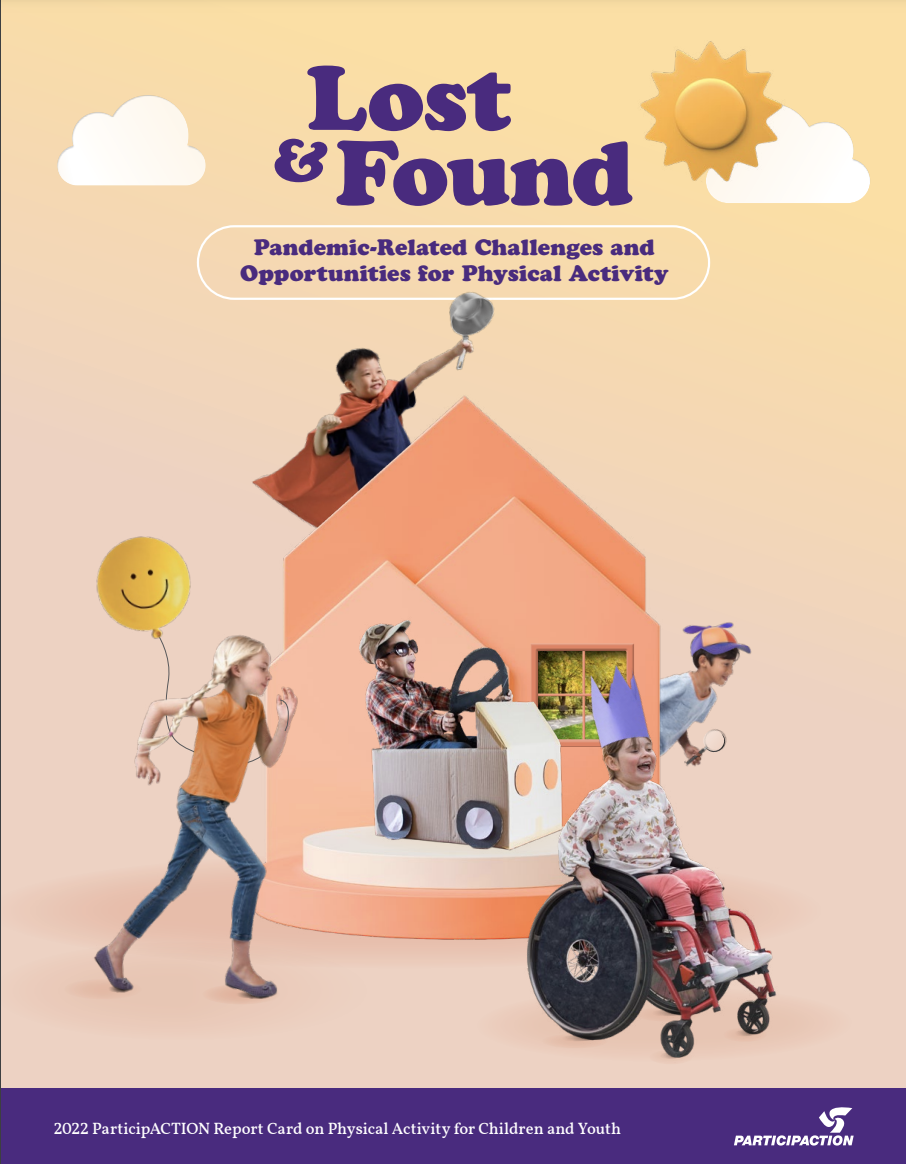The Long Awaited ParticipACTION 2022 Report Card is out!
On October 4, 2022, ParticipACTION released its 2022 Report Card on Physical Activity for Children and youth after being forced to take a break in 2021 due to covid.
What is ParticpACTION?
From the report:
ParticipACTION is a national non-profit organization that helps Canadians sit less and move more. Originally established in 1971, ParticipACTION works with its partners, which include sports, physical activity and recreation organizations as well as governments and corporate sponsors, to make physical activity a vital part of everyday life.
What is the report card?
From the report:
The ParticipACTION Report Card on Physical Activity for Children and Youth is the most comprehensive assessment of child and youth physical activity in Canada. The Report Card synthesizes data from multiple sources, including national datasets and the best available peer-reviewed research, to assign evidence-informed grades across 14 indicators. The Report Card has been replicated in over 70 cities, provinces and countries, where it has served as a blueprint for collecting and sharing knowledge about the physical activity of young people around the world.
Why is it Important?
The Report Card gives BTS an indication on the levels of physical activity amongst our primary target groups, children and youth. It guides our programming and our outcomes.
When the World Health Organization (WHO) declared COVID-19 a pandemic on March 11, 2020, there was a sudden and drastic shift in the ways children and youth could access physical activity opportunities. For instance, many opportunities for physical activity were lost when public health officials determined that, to curb the virus’s transmission, it was necessary to implement measures including lockdowns and closures of schools, sports programs and facilities, and outdoor spaces such as playgrounds and parks. Nationally, children’s and youth’s physical activity decreased, which was related to lost access to schools and opportunities for sports and recreation, p. 8.
Given this reality, when this year’s Report Card Research Committee asked the question, “Why is physical activity important?” we decided to emphasize the importance of physical activity for equity-deserving groups, echoing the message from Dr. Theresa Tam, Canada’s Chief Public Health Officer, that “no one is protected until everyone is protected”, p. 8.
Why is Physical Activity Important for Racialized Children and Youth?
Research is emerging on the association between a child’s racial/ethnic backgrounds and physical activity participation, and recent studies highlight the complex relationship between race, physical activity levels and associated health outcomes, p. 15.
For example, in a study focusing on elementary school children in Vancouver and Richmond, British Columbia, Rhodes et al (2006) found that children with an Asian background were less active than those with a White (European) background, p. 15.
Another study from Vancouver, British Columbia, showed that eight- to 11-year-old children with an Asian background engaged in lower levels of MVPA when compared with children with a European/North American background, p. 15.
Recent studies from the United States have reported similar results. Griffith et al (2013) studied one-to-eight-year-old American children using accelerometry and found that children with an Indian background were significantly less active overall when compared with all other ethnic groups, and children with a Bangladeshi background had the lowest prevalence of meeting the 60 minutes/day MVPA guideline when compared with all other ethnic groups, p. 15.
A recent study focusing on 11- to 17-year-old youth living in low-income neighbourhoods in the United States also reported seasonal variations in physical activity participation across racialized groups, where low physical activity participation in summer months (compared to months of the school year) was more common among Indian, Asian/Pacific Islanders and Latino youth, while screen time increased the most among Black youth, p. 15.
Why is Physical Activity Important for Girls?
Gender inequity in sport has a long history in Canada. From the 1800s to today, girls and women have been at a disadvantage in the way sport has been taught, played and watched. Although decades of advocacy and effort have brought about great advancements for women’s success and inclusion in sport, participation and opportunities still lag behind those for men. Research conducted by Canadian Women and Sport indicates that sport participation levels for girls are still well behind the levels for boys. For instance, 59% of teenage boys participate in sport weekly, compared to only 42% of teenage girls, p. 17.
Sadly, because of the lower participation numbers, girls are missing out on many of the benefits that sport provides. Sport expands societal beliefs about what girls can achieve. It allows girls to develop leadership skills, confidence and resilience: attributes that they will bring to their education, careers and communities, p. 17.
We know that COVID-19 has profoundly impacted society and will for years to come. While it has altered everybody’s lives to some degree, research has shown that women and girls were disproportionately impacted through job losses, burden of family caregiving and violence at home. Sadly, within sport, one in four girls are not committed to returning to their pre-pandemic sport participation levels, p. 17.
Grades
Physical Activity // D
Last year // D+
According to the Canadian Community Health Survey (CCHS), the percentage of youth (12-17 years) meeting the MVPA recommendation within the 24-Hour Movement Guidelines (i.e., at least 60 minutes/day of MVPA) decreased from 51% pre-pandemic (measured in the fall of 2018) to 37% during the pandemic (fall 2020), p. 21.
Racialized children and youth
According to the CCHS, the percentage of youth from a visible minority meeting the MVPA recommendation decreased from 47% pre-pandemic (fall 2018) to 34% during the pandemic (fall 2020), p. 21.
Girls
According to the CCHS, the percentage during the pandemic of youth meeting the MVPA recommendation in 2020 was 34.8% for girls and 39.5% for boys, compared to pre-pandemic levels of 46.4% for girls and 55.3% for boys, p. 21.
Recommendations
Health promotion efforts are needed to address the COVID-19-related decline in physical activity, especially in equity-deserving groups that have been disproportionately impacted.
Common physical activity questionnaires should be used to facilitate comparison across groups and studies.
Active Play // D-
Last year // F
25% of children and youth (5–17 years) achieved >840 minutes/week (>2 hours/day on average) of total time engaged in indoor and outdoor unstructured play. This includes physical activity and sport at home, outdoor time at school, outdoor unstructured play in the community, and outdoor time in spaces such as parks and green spaces (2021-2022 Cycle 1 and 2 sub-sample Parent Survey on Physical Activity and Sport, Canadian Fitness and Lifestyle Research Institute [CFLRI]), p. 25.
Racialized children and youth
No nationally generalizable and COVID-19-specific research was found., p. 25.
Girls
24% of girls and 25% of boys (i.e., no significant difference) achieved >840 minutes/week (>2 hours/day on average) of total time engaged in indoor and outdoor unstructured play, physical activity and sport at home, outdoor time at school, outdoor unstructured time in community, and outdoor time in spaces such as parks and green spaces (2021–2022 Cycle 1 and 2 sub-sample Parent Survey on Physical Activity and Sport, CFLRI)., p. 25.
Recommendations
More high-quality studies on outdoor play are needed, with attention to detection and selection bias, transparent reporting and study pre-registration.
More data on outdoor play behaviours among racialized and marginalized populations are needed.
Physical Education // Incomplete (INC)
Last year // D+
No current large-scale or nationally representative data were available to assign a Canadian COVID-19-specific grade; thus, the grade for the Physical Education indicator is Incomplete (INC), p. 36.
Physical Literacy // Incomplete (INC)
Last year // D+
No current large-scale or nationally representative data were available to assign a Canadian COVID-19-specific grade; thus, the grade for the Physical Education indicator is Incomplete (INC), p. 51.
ParticipACTION. Lost & Found: Pandemic-related challenges and opportunities for physical activity. The 2022 ParticipACTION Report Card on Physical Activity for Children and Youth. Toronto: ParticipACTION; 2022.
About Beat the Streets:
At Beat the Streets, our mission is to advance the education of low-income children and youth in the Greater Toronto Area through fun and unique sports, life skills, and employment-based development programs. Since 2015, we have served over 28,000 young individuals through our Wrestle 4 Fun, Level Up, You Grow Girl, Work It (Summer Jobs), and Volunteer programs, providing them opportunities to develop their physical, mental, and social well-being. We believe in empowering the next generation by breaking down barriers and creating pathways to success.
Join us in our mission to impact youth:
Join us in making a difference by supporting our cause and learning more about how you can contribute to the education and growth of children and youth in need. Together, we can shape a brighter future for all.



